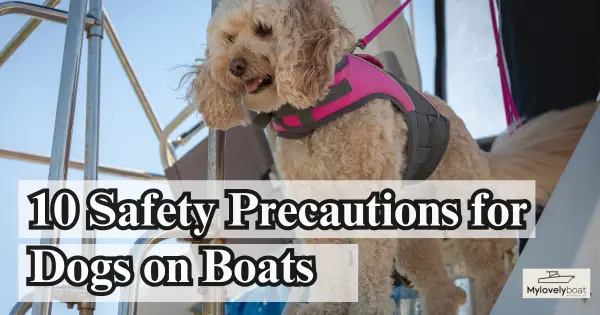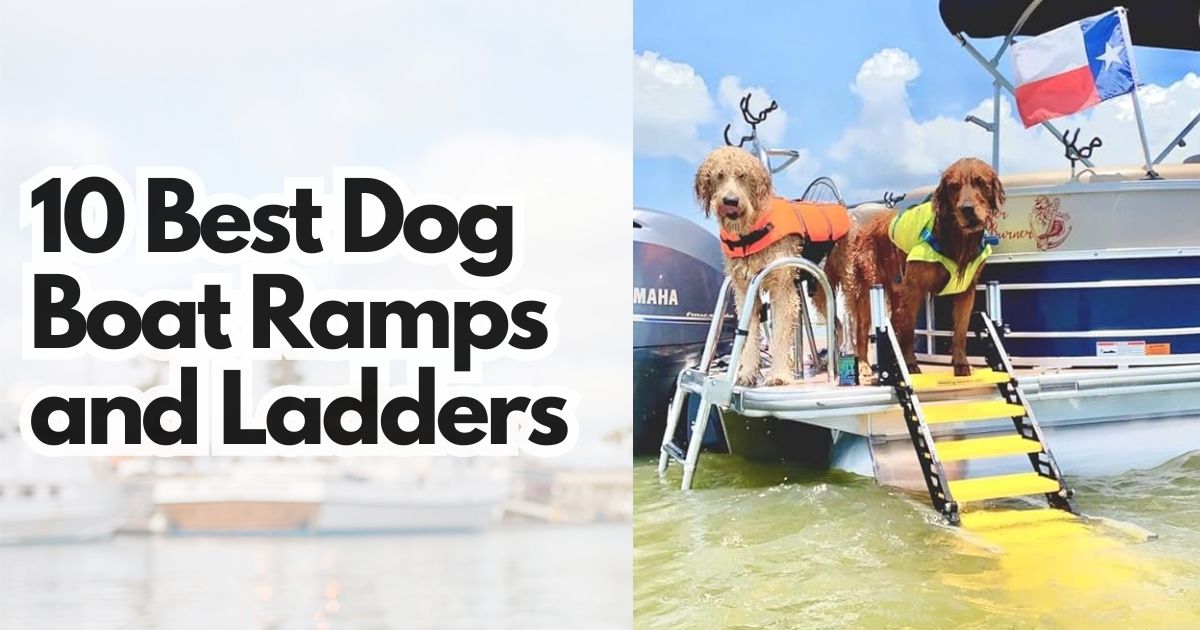10 Essential Safety Precautions for Dogs on Boats

Boating with your dog can be a fun and fulfilling experience, but it’s crucial to prioritize their safety to ensure a smooth outing.
Just like humans, dogs face unique risks when aboard a boat. Equipped with the right precautions and preparation, you can keep your furry friend safe and happy while enjoying the open waters.
Here are ten essential safety tips to help you navigate your boating adventure with your dog.
- Life Jacket: Always have a well-fitted life jacket for your dog, even if they are strong swimmers.
- Hydration: Ensure there is plenty of fresh water available to keep your dog hydrated.
- Shade: Provide a shaded area on the boat to protect your dog from direct sunlight.
- Identification: Make sure your dog has proper identification, such as a collar with tags and a microchip.
- Training: Train your dog on basic commands and ensure they can recall commands even in an emergency.
- Safety Area: Designate a safe area on the boat where your dog can relax and stay secure.
- First Aid Kit: Keep a pet-specific first aid kit on the boat.
- Acclimation: Acclimate your dog to the boat gradually before long trips.
- Swimming Access: Ensure safe entry and exit points if your dog goes swimming.
- Monitoring: Constantly supervise your dog when they are on the boat and never leave them unattended.
Would you like more detailed information on any of these precautions?
10 Safety Precautions for Dogs on Boats
1. Life Jacket
A life jacket is essential for your dog’s safety on a boat, regardless of how well they can swim.
Look for a well-fitted life jacket designed specifically for dogs, with adjustable straps and a handle for easy lifting. It should be brightly colored to increase visibility in case of an emergency.
Regularly check that it is in good condition and fits your dog comfortably. Practice having your dog wear the life jacket even when not on the boat to ensure they are accustomed to it.
2. Hydration
Keeping your dog hydrated is crucial while on a boat. Make sure to carry an ample supply of fresh water and a portable bowl.
Boats can get hot, especially under the sun, increasing the risk of heatstroke and dehydration. Offer water frequently and monitor for signs of thirst.
Avoid letting your dog drink seawater or lake water, as it can contain harmful bacteria and contaminants that may make them ill.
3. Shade
Providing a shaded area on the boat helps protect your dog from the harmful effects of prolonged sun exposure, such as sunburn and heatstroke.
Use a canopy, umbrella, or specially designed sunshade for pets. Place it in a location where your dog can comfortably relax without direct sunlight.
Additionally, consider applying pet-safe sunscreen to sensitive areas like the nose and ears, especially for dogs with short coats or light-colored fur.
4. Identification
Proper identification is critical in case your dog gets lost during your boating excursion. Ensure they wear a collar with up-to-date ID tags that include your contact information.
A microchip provides an additional layer of security, allowing veterinary clinics and shelters to identify your dog if they become separated from you.
Consider adding a waterproof tag or providing identification details within the life jacket for added assurance.
5. Training
Basic training is invaluable for your dog’s safety on a boat. Commands like “sit,” “stay,” and “come” are essential for controlling their behavior in various situations.
Practice these commands in different environments to ensure your dog can respond under distractions. Training your dog to remain calm and steady on a moving boat will help avoid accidents.
Positive reinforcement and consistent practice will make them more confident and obedient during your boating trips.
6. Safety Area
Designating a specific safety area on the boat where your dog can rest securely is crucial.
This area should be free from hazards and provide a comfortable space with some traction to prevent slipping. Consider using a crate, a dog bed, or safety barriers to create this secure spot.
By having a designated area, your dog can feel safe and more relaxed, minimizing the risk of wandering around the boat and encountering potential dangers.
7. First Aid Kit
A pet-specific first aid kit is essential for addressing any minor injuries or emergencies while on the boat.
This kit should include items such as antiseptic wipes, bandages, scissors, tweezers, and any regular medications your dog may need. Familiarize yourself with basic pet first aid procedures.
Having a first aid kit ensures you can quickly respond to cuts, scrapes, or insect bites, providing immediate care until you can reach a veterinarian.
8. Acclimation
Gradually acclimating your dog to the boat is vital for their comfort and safety. Start with short visits to the boat while it is docked, allowing your dog to explore and get familiar with the surroundings.
Gradually increase the time spent on the boat and introduce short trips to help your dog adjust to the movement and sounds.
Reward your dog with treats and positive reinforcement to make the experience enjoyable and stress-free.
9. Swimming Access
Providing safe swimming access is important if your dog enjoys taking a dip. Ensure there are secure entry and exit points on the boat, such as a dog-friendly ladder or ramp.
Never force your dog to swim—let them go at their own pace. Supervise swimming activities closely and ensure your dog wears their life jacket.
Rinse your dog with fresh water after swimming to remove any salt, algae, or harmful substances from their coat.
10. Monitoring
Constant monitoring is crucial for your dog’s safety while on a boat.
Never leave your dog unattended, as boats have various hazards like sharp objects, fishing equipment, and unstable surfaces. Keep an eye on their behavior and health, looking for signs of stress, overheating, or seasickness.
Regularly check their life jacket and confirm it fits properly throughout the trip. Being vigilant ensures you can quickly react to any potential issues and keep your dog safe.
FAQ
Are dogs safe on a boat?
Yes, dogs can be safe on a boat if proper safety precautions are taken, such as using life jackets, providing hydration, and constant supervision.
How do you deal with a dog on a boat?
Ensure your dog wears a life jacket, has access to fresh water, a designated safety area, and is well-trained in basic commands for a safer boating experience.
Do dogs need goggles on a boat?
Dogs generally do not need goggles on a boat, but in windy or sunny conditions, dog-specific eyewear can protect their eyes from debris and harmful UV rays.
How are dogs on boats?
Dogs can enjoy boat rides if they are gradually acclimated and provided with essential safety measures like life jackets, shaded spots, and hydration to keep them comfortable.
Can dogs get boat sick?
Yes, dogs can experience boat sickness, similar to motion sickness in cars. Symptoms include drooling, lethargy, and vomiting. Consult your vet for preventive measures.
Can dogs sit in boats?
Yes, dogs can sit in boats, especially in designated safe areas. Ensure they are secure and comfortable to prevent accidents and provide a non-slip surface.
Where do dogs potty on a boat?
Provide a designated potty area like a piece of astroturf, pee pads, or a portable dog potty on the boat. Train your dog to use it before setting sail.
Do dogs get dizzy on a boat?
Yes, dogs can get dizzy on boats due to motion sickness, which can cause disorientation, drooling, and lethargy. Monitor their conditions and consult a vet if needed.
What virus can dogs get from water?
Dogs can contract leptospirosis from contaminated water, a bacterial infection that affects their kidneys and liver. Ensure they avoid drinking or swimming in unknown waters.
Can sea water make dogs sick?
Yes, ingesting sea water can make dogs sick, causing symptoms like vomiting, diarrhea, and dehydration. Always provide fresh water for drinking to keep them safe.





